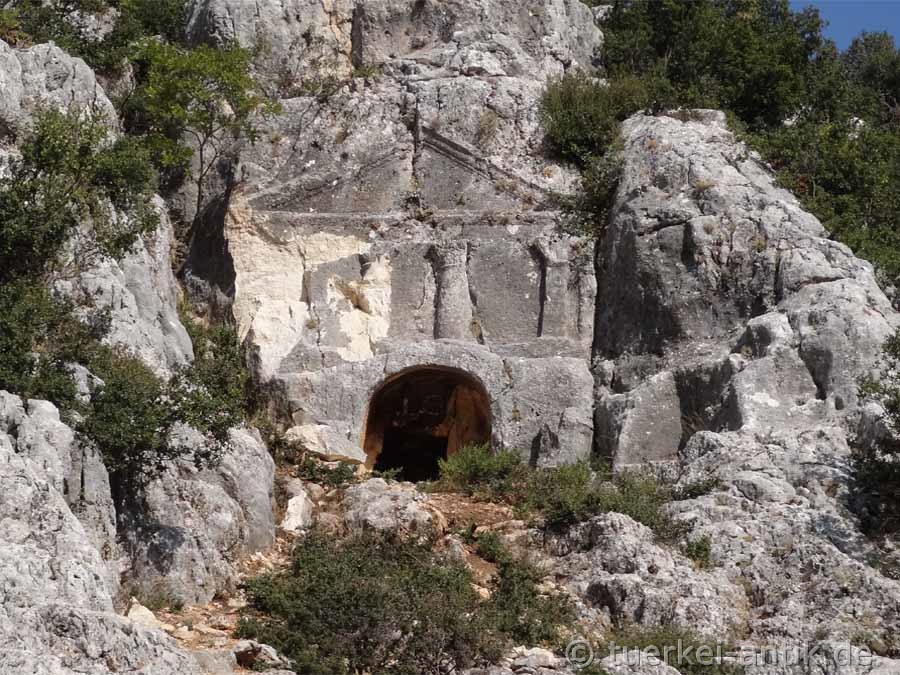 |
| Olba (Ura) in Cilicia | |||
|
|
|
||
| The Acropolis of Olba | |||
|
According to the Greek historian and geographer Strabon (63 BC to 23 AD), the city was founded by Aias, a half-brother of Teukros, king of Cyprus. Aias established a priesthood in Olba and preached the cult of Zeus Olbio. It is known from inscriptions that the city was ruled by the Teukridai dynasty, all priest kings, at the end of the 3rd century / beginning of the 2nd century. |
|||
|
|
|||
| Remains of Hellenistic buildings | |||
|
Their empire extended from Claudiopolis (Mut) to Kanytelleis (Kanlıdivane). Even when the nearby Diokaisareia became town under Marcus Antonius, Oba remained seat of kings. In 39 A.D. the priest dynasty ended, in 72 A.D. it was incorporated into the Roman province of Cilicia. In Byzantine times Olba was part of the province of Isauria, later Pamphilia. |
|||
|
|
|||
| The Nymphaeum | |||
|
The Hellenistic city lay on the hill and was surrounded by a partially preserved city wall. The Acropolis was built on a 1112 m high hill with a triangular base. The slopes and the hilltop are littered with ancient remains of buildings and cisterns. At the old intersection of the roads to Diokaisareia, Korykos and Seleukeia you can see the remains of the nymphaeum. |
|||
|
|
|||
| The aqueduct of Olba | |||
|
|
|||
|
|
|||
|
Aqueduct and watchtower at the Acropolis |
|||
|
|
|||
|
The best preserved is the aqueduct, a structure of a 20 km long water pipeline into the city. Inscriptions on the aqueduct indicate that the aqueduct was built during the reign of Emperor Septimius Severus (193-211 AD) and restored under Emperor Justuin II in 566. The two-storey aqueduct is 150 m long and 25 m high. |
|||
|
|
|||
|
|
|||
| Rock tombs | |||
|
|
|||
|
|
|||
|
Rock grave with gable, unfortunately recently damaged by frost |
|||
|
|
|||
|
100 metres into the valley on the northern side is a rock tomb with a temple relief. In the rock around the burial chamber the facade of a temple with beams, columns and altar in relief is depicted. The floor plans still preserved today show that the ancient houses were built on the northern slopes. |
|||
|
|
|||
|
|
|||
|
Stone basins |
|||
|
In one building there are 6 stone vats with a diameter of 60 cm, a sign that wine was pressed or oil was pressed here. A separate water pipe had been led into the house through a lockable channel. In the surroundings of the city there are some rock necropolises, but they are concentrated mainly in the north and south. The southern necropolis is about 250 m from the nymphaeum and contains numerous rock tombs and sarcophagi from Roman times. |
|||
|
|
|||
| The Theater in September 2017 | |||
| Photos: @chim, Monika P. | |||
| Translation aid: www.DeepL.com/Translator | |||
| Source: Wikipedia and others | |||
|
|
|||


